Theodore Roosevelt Park, part of $430M Project, Reopens by Museum’s Richard Gilder Center
A newly designed grassy land of trees and greenery was constructed in front of the Richard Gilder Center for Science and Innovation at the American Museum of Natural History located at 200 Central Park W. on Thursday, July 13. The park plan is still a contentious topic for some residents, as was the construction of the Gilder Center in May 2023. Eventually the architectural firm Reed Hildebrand worked with community organizations, elected officials, Community Board 7, and government agencies to create the newly designed grassy addition to the Gilder Center.
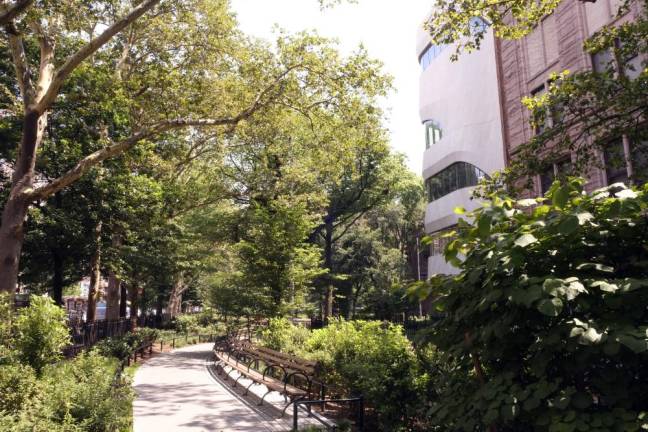
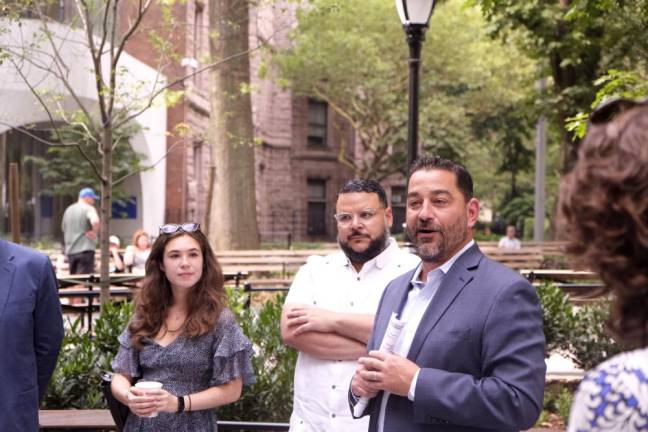
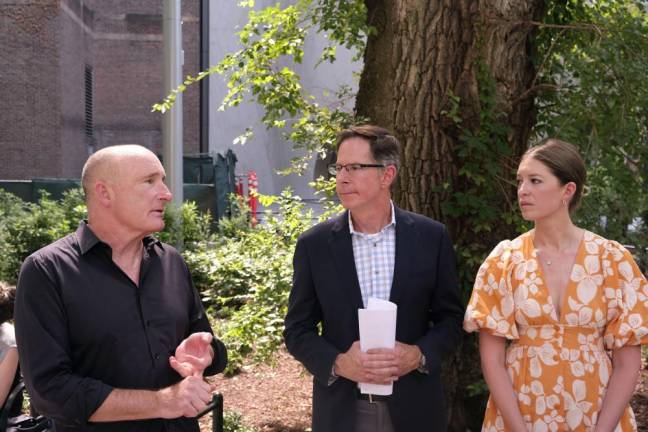
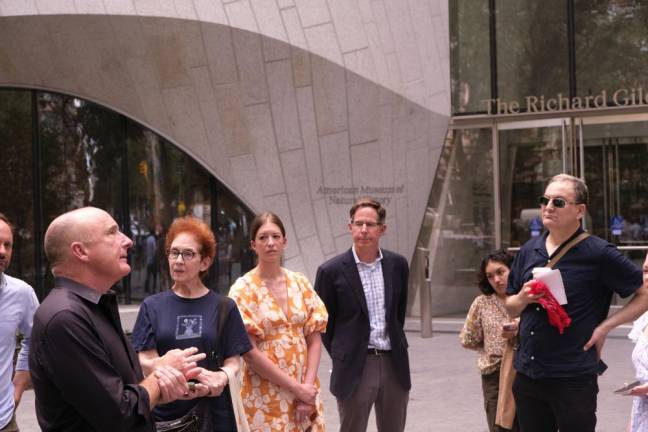
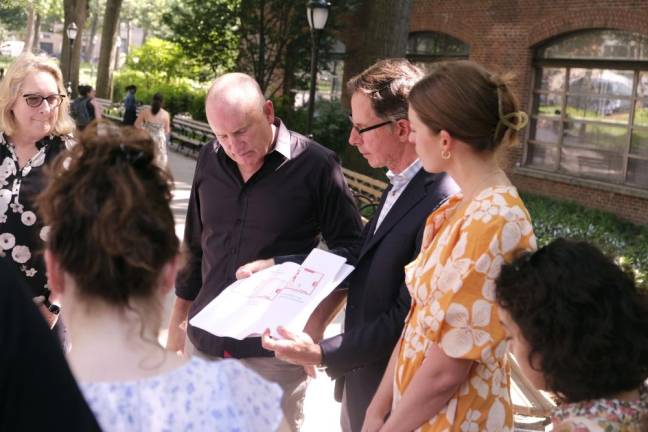
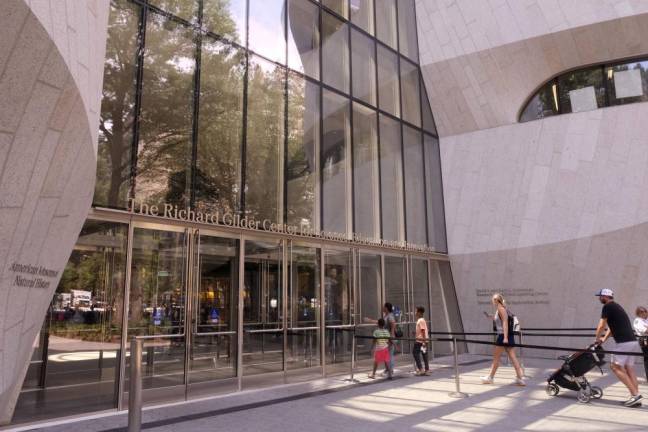
The tranquility of new parkland surrounding the American Museum of Natural History belies the hot debate that once galvanized neighborhood activists who objected to the chopping down of seven historic trees.
But the museum and NYC Parks on July 13 opened the re-designed grassy portion of the Theodore Roosevelt Park that extends from West 77th Street to West 81st Street, adjacent to the museum’s new Richard Gilder Center for Science, Education and Innovation on Thursday. And new trees and plants are very much part of the mix in what became a $430 million renovation of the parkland and building of the Richard Gilder wing of the museum.
The new park portion includes the revitalized 13,500-square-foot Margaret Mead Green lawn, installation of 15 new benches, bringing the new total to 38, up from 23, the addition of 23 new canopy and understory trees with shrubs, ground covers, and planted islands, and an enlarged and welcoming entrance at Columbus Avenue, as well as new curvilinear paths.
The newly designed two-acres of the park was developed by Reed Hildebrand with community organizations, elected officials, Community Board 7, and government agencies, including collaborations with a Park Working Group. The budget value of the new addition of the park including the Gilder Center came to $430 million with a number of those millions invested on the newly designed portion of the park, Dan Slippen, Vice President of Government and Corporate Relations at American Museum and Natural History said.
However, it is still a contentious point for some residents, who fought to keep the park as it was before the building of the Gilder Center. Residents argued that the museum was “encroaching on” a quarter of an acre of Teddy Roosevelt Park—a public land administered by the New York City Department of Parks and Recreation. Arguments centered around an environmental concern — the construction required the destruction of seven trees. A neighborhood group sued numerous times ultimately losing in December 2018. The construction began in June 2019 with a completion date in May 2023.
When the news came out in the summer of 2019, some residents were still upset that their efforts did not halt the project. “It’s a sad day,” one UWSer commented four years ago when the construction was announced. “As with all things in NYC lately—this is a gain for tourists and a loss for New Yorkers. Although Central Park is nearby, this is still a loss for young neighborhood kids who ride their scooters where the Gilder Center will be, and for anyone who doesn’t have time to go into the park but just wants a quick spot to sit down.”
In the newly designed portion of the park 23 trees were added, five of the older trees were preserved and seven were removed.
Developers argue that the newly designed grassy area of the park enhances the overall experience of the park while maintaining its fundamental character and uses.
“Hot on the heels of the opening of the Gilder Center earlier this year, this revitalized park now offers a more welcoming space for museum visitors and neighborhood residents alike to rest on the new benches, picnic on the now-opened Margaret Mead Green, and take a walk on the new paths throughout the park,” Sue Donoghue said in a statement.
“By virtue of where it is—it has helped facilitate many more connections within the museum, so as a design goal and objective it has improved the visitor experience.” Roberto Lebron, Senior Director of Communications at the American Museum of Natural History said.
The Gilder Center has been scaled back allowing for more a space for the park. “After further project review by the community, the museum is scaled back. Overall, it is a quarter acre of parkland that is taken up by the Gilder Center because of the effort to scale down,” Lebron said.
“Accessibility, sustainability, and character” are the three things that Slippen says are what make the park better than it was.
“I really think the character that is created here, really demonstrates our ability to make careful change,” Doug Reed, principal of the project at Reed Hildebrand said. “We really wanted to underscore the community being a part of it. The community is passionate about this project.”
There is an environmental advantage in the newly redesigned portion with some practical advantages in light of dangerous flooding in recent years. “A big change was our storm water management system,” John Grove, the principal in charge of the project at Reed Hildebrand said. “We’ve taken the storm water during the storm, collected it all and put it underground in tanks, so when it goes into the city system, it goes in at a much slower rate.”